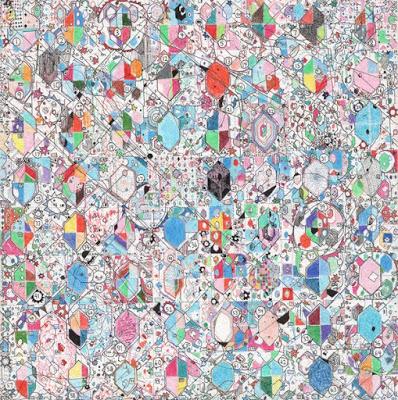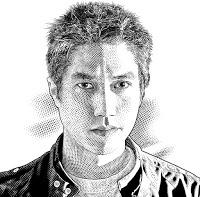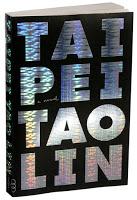
|
"Mandala 15" by Tao Lin |
Tao Lin’s Taipei: Review
By Armando Ortiz
If novelists were to be rappers then the one writer that stands out above all rappers today is Tao Lin. There have been some people in the internet that have compared his current novel, Taipei to Drake’s Nothing Was Same, but I won’t be doing that here. Nope, Tao Lin is the equivalent to an underground rapper like Pimp C, Curren$y or Danny Brown. Lin is a great storyteller like many that tell their stories of drug infused orgies and adventures. In Taipei, the main character, Paul, is a young up and coming writer who embarks on various trips to promote his book, taking road trips to other nearby cities or traveling to visit family in other states and outside the country. Paul’s drugs of choice are pills of the prescription kind that are used today, but tend to be highly addictive. He takes excessive amounts of Adderall, Xanax or other anxiety and depression type prescription drugs. He also infuses these drug trips with mushrooms, LSD, and excessive marijuana smoking, activities which most rappers talk about these days.

|
Tao Lin |
I had come across Tao Lin while reading an article in the Wall Street Journal a couple of years ago, it must have been the book review section of the newspaper. I was impressed by what I read, prompting me to look his name up using Wikipedia, discovering his blog, which I briefly read, and leading me to purchase a copy of Taipei. Paul is trying to make a name for himself and is enjoying relative fame amongst the literary and art crowd of New York. In addition to being a writer, Paul is going through a bad breakup that has kept him in the pits for the last few months. Despite that he goes to various gatherings that his friends organize where he mingles with other up and comers. Swimming through the house parties that he’s invited to, Paul ends up meeting a new chick at one of these events, and suddenly his wit and conversational prowess are revived. In many ways she becomes his new, yet elusive, muse. The tension that sprouts between this new and emerging relationship is what truly drives the story, since this new and relative unknown is what gives Lin’s novel another level of interest, engaging the reader not only through his creative and long descriptions of dinners and city life, but giving the reader a glimpse into the tensions in dating and relationships in our contemporary world.
Paul seems apprehensive about the relationship, displaying his fear that what is happening might turn into a disappointment and lead to a breakup. Nonetheless there is a glimmer of hope that emerges within the story and we see instances of general happiness, and satisfaction with his new partner. On the other hand, both characters like to engage in some heavy recreational drug use which results in hours of sleeping in his tiny room or simply spending hours together but on each other’s computers and communicating via text, email or instant messaging. Their excesses signals that their relationship might end up being toxic, but Paul and his girl still don’t know what will happen with them even after returning from a trip abroad.

|
Taipei by Tao Lin |
In many ways Lin describes not only contemporary life in an American city, but also shows the realities that come with being connected to the internet, having portable electronic devices, which in many ways depersonalize people. On the other hand, Paul has a broad selection of drugs at his disposal- instantly. Some of these drugs, because they are prescription drugs, manage to leave the country with him becoming an intricate channel. At some point in the story Paul and his girlfriend spend a few days in Taipei, Taiwan wandering the malls and spending a memorable drug infused trip inside and outside a McDonald’s all of which is captured in their digital camera.
The reason why Lin could be considered an underground rapper is because throughout the story his character keeps true to himself, albeit a bit depressive and more than half of the time on some pill. Yet what he describes is no different than what rappers, like Danny Brown talk about in most of their songs. Brown, like Lin, tells stories about his life in Detroit and his surroundings in the many mixtapes, Detroit State of Mind 3, Detroit State of Mind 4,It’s A Art, Hot Soup and albums XXX, and Old that have been released via the internet. His body of work describes life in such detail that it's undeniable that he has lived those tales or else why would he be sharing them to the public. This same logic follows other better known rappers like A$AP Rocky who describe life in New York, though a slightly different version of it but with the same amount of drugs and though they might not frequent the bars and hangouts of highbrow writers their experiences are very similar.

|
Rapper Danny Brown |
One immediately might wonder how it is that a person being a writer can in any way have similar experiences as rappers that claim to come from the hood. Well, aside from the idea that with a demand there is a supply or vice versa it creates a fringe where all worlds meet. Either way, both seem to make a dynamic that is both experienced by those walking in the realms of high or low culture. At the end of the day a lot of what Danny Brown talks about is very similar to what Tao Lin manages to paint in his novel. The individual living in the city surrounded by all kinds of different realities, and yet despite their drug infused bodies at times being numbed by the drugs, have a persistent desire to write and to publish, putting in the ground work required of any emerging writer or rapper.
The crowds that Lin brings, are the same size of many of the underground rappers, so why is it that these people, these writers manage to bring crowds that maybe in their everyday life pass each other as they walk down a sidewalk, each going their own way, maybe shopping at corner stores for snacks like Cheetos and sodas or patronizing places like Wholefoods or Lawsons. These underground artists like Danny Brown along with Tao Lin talk about things that affect everyone on a daily basis, from the teenager that attends secondary school to the published author walking his dog, they experience love and heartbreak which is intimately connected to an individual through aloneness and loneliness, and is either suppressed or intensified by heavy drug use.



